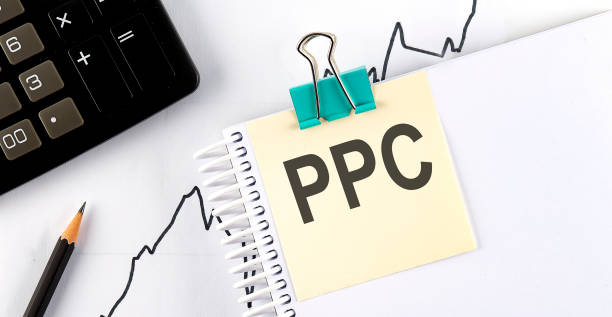Do you want your Pay-Per-Click (PPC) campaigns to be truly successful? Have you been tracking the right metrics to measure success and ensure your marketing budget is well-spent? If not, you’re not alone. Many businesses focus on launching campaigns but overlook the importance of measuring their performance with the right PPC success metrics. Understanding these metrics is crucial for optimizing your PPC strategy and improving your ROI.
Whether you are new to PPC advertising or have been managing campaigns for a while, it’s time to dive deeper into the key performance indicators (KPIs) that matter the most. So, in this guide, we’ll explore the essential PPC success metrics that every marketer should focus on and explain why they are vital for your campaign’s growth. Let’s jump right in!
What Are PPC Success Metrics?
Before we get into the specifics of each metric, it’s important to understand what PPC success metrics are and why they matter. Additionally, in simple terms, PPC success metrics are measurable factors that help determine how well your PPC campaigns are performing. So, by tracking these metrics, you can gain insights into how effective your ads are in driving traffic, generating leads, and ultimately converting visitors into customers.
The beauty of PPC advertising lies in its ability to provide clear, actionable data that can guide your decision-making. Moreover, by focusing on the right metrics, you can continuously optimize your campaigns, refine your targeting, and maximize your return on investment (ROI).
Why Should You Focus on PPC Success Metrics? – PPC Success Metrics
The digital advertising landscape is dynamic, with constant changes in algorithms, competition, and user behavior. Moreover, without the right PPC success metrics, you could miss out on opportunities to improve your campaigns, waste your marketing budget, and fall behind your competitors. So, here are some reasons why focusing on PPC success metrics is crucial for your business:
- Improve Budget Allocation: Knowing which ads, keywords, or campaigns drive the best results allows you to allocate your budget more efficiently.
- Optimize Performance: By analyzing key data points, you can tweak your campaigns for better performance, enhancing your click-through rate (CTR) and conversion rate.
- Measure ROI Effectively: Tracking metrics helps you determine the true return on investment of your PPC campaigns, allowing you to prove the value of your advertising efforts.
- Refine Targeting: PPC metrics reveal how well you’re reaching your audience. Also, this enables you to refine your targeting and reach potential customers more effectively.
Now that we understand the importance of PPC success metrics, let’s dive into the specific metrics you need to track.
Click-Through Rate (CTR)
Click-through rate (CTR) is one of the most fundamental metrics in PPC advertising. Furthermore, it measures the percentage of people who click on your ad after seeing it. A high CTR indicates that your ads are relevant and compelling to your audience.
But why is CTR so important?
A higher CTR means that your ad is effectively capturing attention, which can lead to more conversions. Moreover, Google Ads (and other platforms) reward ads with higher CTRs by lowering your cost-per-click (CPC), making your campaigns more cost-effective.
To improve your CTR, focus on:
- Ad Copy: Write compelling, relevant copy that clearly addresses the needs of your target audience.
- Ad Extensions: Use ad extensions, such as site links or callouts, to provide more value to users and increase your ad’s visibility.
- Relevance: Ensure that your ads match the search intent of your keywords and audience.

Cost Per Click (CPC) – PPC Success Metrics
Cost per click (CPC) refers to how much you pay each time someone clicks on your ad. While low CPC is generally desirable, it’s important to remember that paying a slightly higher CPC might be worth it if you’re targeting highly relevant and valuable keywords.
Tracking CPC helps you evaluate the efficiency of your bidding strategy. If your CPC is higher than your target cost, it might be time to revisit your keyword selection or adjust your bidding strategy.
To optimize CPC, consider:
- Keyword Research: Focus on long-tail keywords that may have lower competition and cost but are still highly relevant to your audience.
- Ad Quality: High-quality ads typically receive a better Quality Score from platforms like Google, which can lower your CPC.
- Bid Management: Adjust your bids based on performance and competition for the best keywords.
Conversion Rate (CVR)
Conversion rate (CVR) is the percentage of users who take a desired action after clicking on your ad. So, this could be making a purchase, signing up for a newsletter, or downloading a whitepaper.
A high conversion rate indicates that your landing page, offer, and overall user experience align with the expectations set by your ad. Also, it means your audience is engaging with your brand, which is the ultimate goal of PPC advertising.
To improve conversion rates, focus on:
- Landing Page Optimization: Ensure your landing page is user-friendly, loads quickly, and aligns with the messaging in your ad.
- Clear Calls-to-Action (CTAs): Make it easy for users to understand what action they should take next.
- A/B Testing: Regularly test different ad variations and landing page designs to see what works best.
Cost Per Acquisition (CPA) – PPC Success Metrics
Cost per acquisition (CPA) measures how much you spend to acquire a customer or lead. Additionally, this is a critical metric for understanding how much your business is paying to convert clicks into actual sales or valuable actions. Also, a low CPA means you’re efficiently turning clicks into conversions, which is the ultimate goal of any PPC campaign.
To reduce CPA, try:
- Optimizing Your Ads: Make sure your ads are highly targeted and relevant to the user’s intent.
- Refining Your Audience Targeting: Use demographic and behavioral targeting to reach the most likely buyers or customers.
- Improving Conversion Paths: Streamline the customer journey to make the process as simple and direct as possible.
Return on Ad Spend (ROAS)
Return on ad spend (ROAS) is one of the most important metrics for assessing the profitability of your PPC campaigns. So, it compares the revenue generated from your PPC efforts to the amount spent on those efforts. For example, if you spent $1,000 on a campaign and generated $4,000 in revenue, your ROAS is 4:1.
To maximize ROAS, consider:
- Smart Bidding Strategies: Implement bidding strategies that automatically adjust bids based on the likelihood of conversion, such as Target CPA or Target ROAS.
- Targeting the Right Keywords: Invest in high-intent keywords that are more likely to convert.
- Refining Your Offer: Ensure that your offer is compelling enough to drive conversions, such as discounts, free trials, or value-added content.

Impressions – PPC Success Metrics
Impressions refer to how many times your ad is displayed, regardless of whether it’s clicked. While impressions don’t directly impact conversions, they help you understand how visible your ads are. A higher number of impressions means your ad is reaching a broader audience.
To increase impressions, consider:
- Broadening Your Keywords: Use broader, relevant keywords to expand your reach.
- Geographic Targeting: Expand your ad’s reach to more locations or regions to increase visibility.
- Multiple Ad Formats: Utilize different ad formats, such as display ads or video ads, to increase your reach.
Quality Score
Quality Score is a metric used by platforms like Google Ads to assess the quality of your ads, keywords, and landing pages. It directly impacts your ad’s positioning and cost-per-click. Ads with a higher Quality Score tend to have better placement and lower CPC.
To improve your Quality Score, focus on:
- Relevance: Ensure your ad copy aligns closely with the keywords you’re targeting.
- Landing Page Experience: Provide a seamless user experience on your landing page, making it relevant to the ad.
- CTR: As mentioned earlier, a higher CTR can improve your Quality Score.
Ad Position – PPC Success Metrics
Ad position refers to the location of your ad on a search results page. Ads that appear higher on the page typically get more clicks, so understanding ad position is important for optimizing visibility.
To improve ad position:
- Increase Bids: If you want a higher position, you may need to adjust your bids.
- Improve Ad Quality: High-quality ads tend to rank higher, so improving your CTR and Quality Score can lead to better ad positions.

Conclusion: PPC Success Metrics
PPC success metrics are essential for optimizing your campaigns, improving your ROI, and ensuring that your marketing budget is well-spent. By focusing on the right metrics, you can make data-driven decisions that help you refine your strategy, optimize your campaigns, and achieve your business goals.
Tracking metrics like CTR, CPC, conversion rate, CPA, ROAS, impressions, and Quality Score will provide you with the insights needed to make your PPC campaigns a success. Remember, the key is to continually test, analyze, and optimize your campaigns based on these metrics. With the right approach, your PPC campaigns can deliver measurable, long-term success.
Are you ready to start tracking these metrics and improving your PPC performance? It’s time to take your PPC campaigns to the next level!








